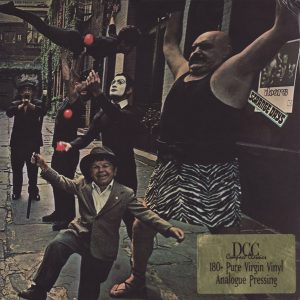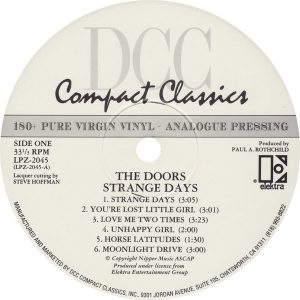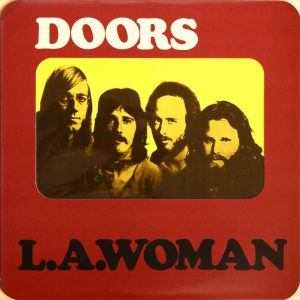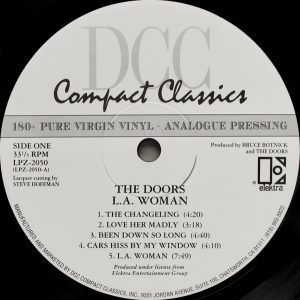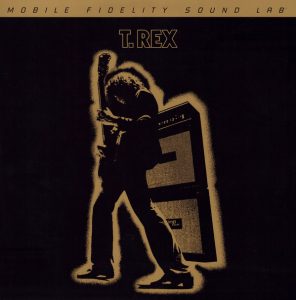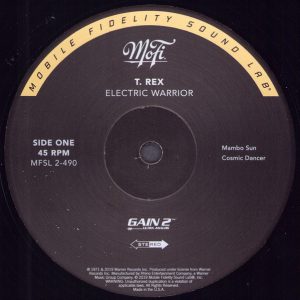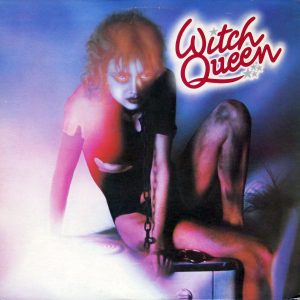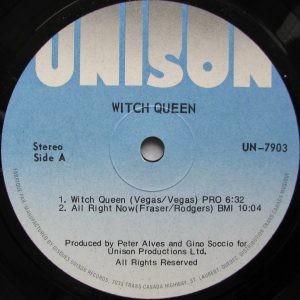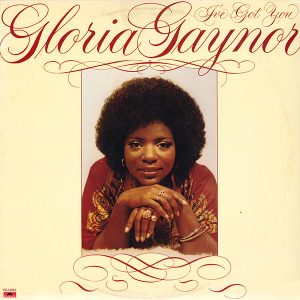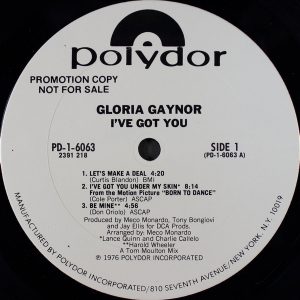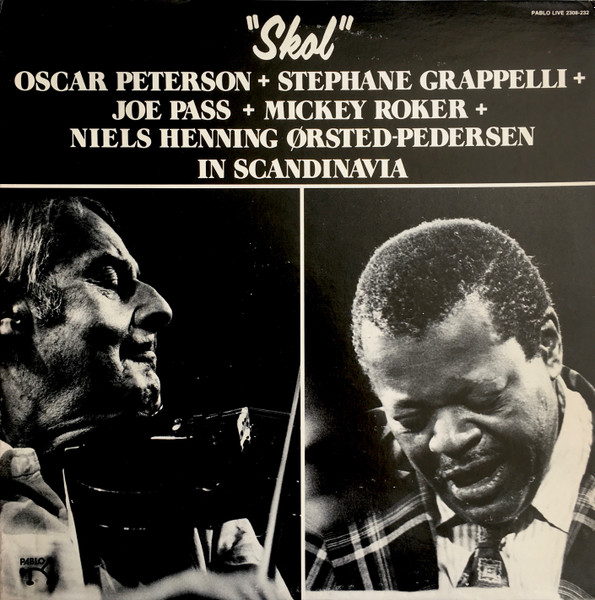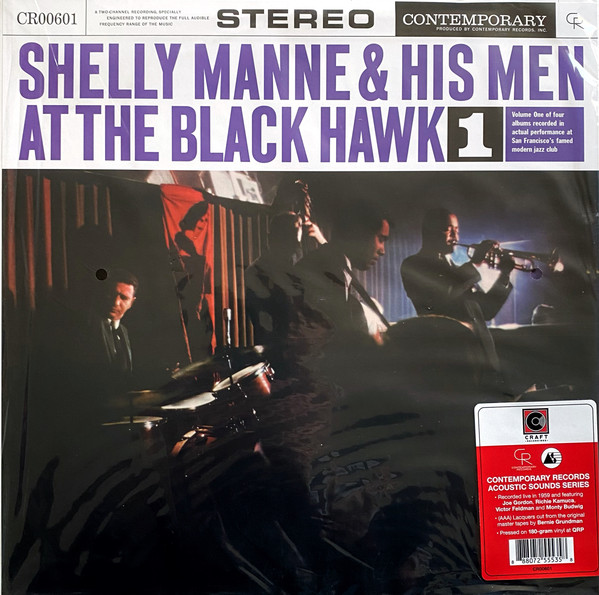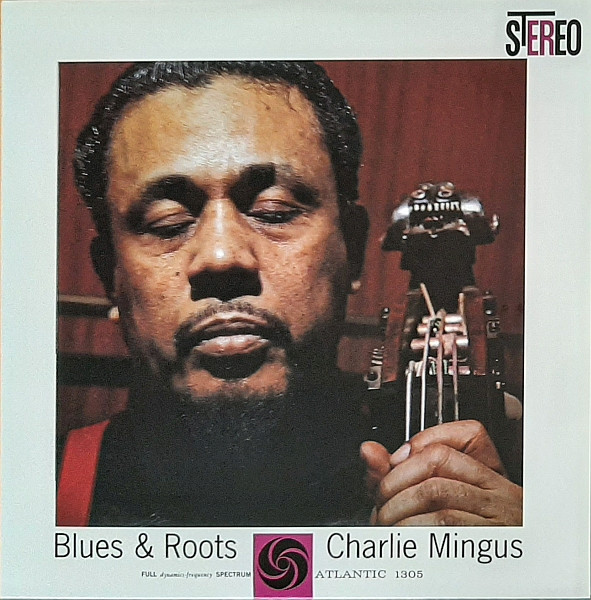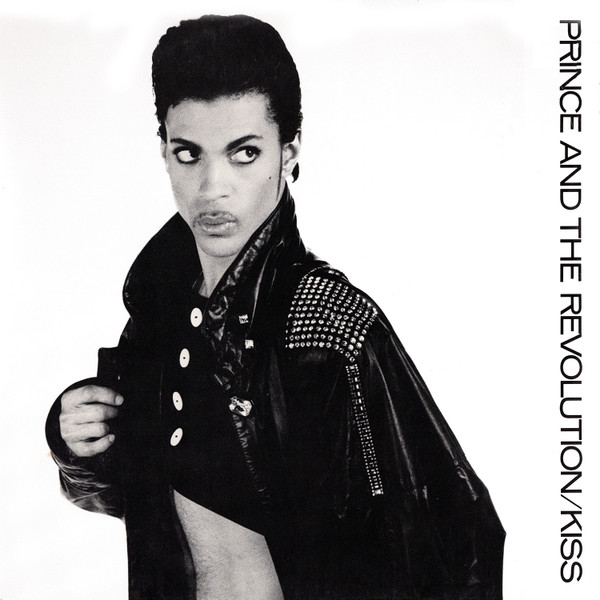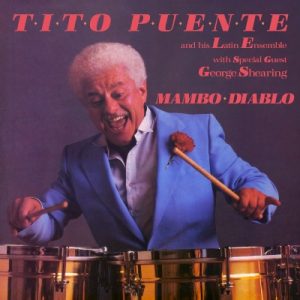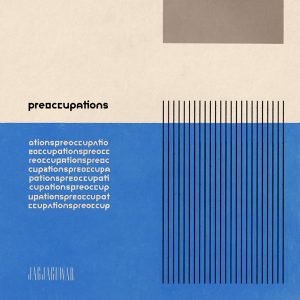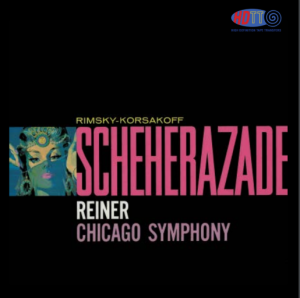This is an ongoing project by Claude Lemaire of Soundevaluations
166. The Doors, Strange Days. Elektra – EKS-74014 (1967), DCC Compact Classics – LPZ-2045 (1992), 33 1/3 rpm. Genre: acid rock, psychedelia, psychedelic rock, blues rock, musique concrète (in small doses).
The last track on The Doors debut album is titled "The End" but nothing could be further from the truth. The Los Angeles-based band forged ahead with five future studio releases within five consecutive years, unlocking the doors with the key of their imagination that would make Rod Serling proud. Inspired in part by beat poet and novelist Jack Kerouac, and writer-philosopher Aldous Huxley—whose book The Doors of Perception provided the group with a haunting name—the quartet of Morrison, Manzarek, Krieger, and Densmore drew liberally from blues, rock, psychedelia, early twentieth century German music, Indian and Turkish influences, circus type music, and flirting with jazzy instrumentation and improvisation. Strictly in terms of musical merit, the self-titled debut recorded in late-summer 1966, and released in January 1967 represents if not the best, then certainly one of the three best the band brought forth before Morrison's untimely death in July 1971. Unfortunately the sonics do not reach the same high level of musicianship for inclusion in this List, perhaps constrained by the 4-track recorder—still the industry norm at the time. On the other hand, with their second LP Strange Days, released in September, recording engineer Bruce Botnick benefited from the greater flexibility afforded by the brand new 8-track installed at Sunset Sound Recorders in Hollywood, California. This not only improved greatly the sound quality but opened up more artistic experimentation in the studio to create strange sounds and textures. Producer Paul A. Rothchild reprises his role. Among the ten tracks are some of the most memorable melodies lining their catalogue: the psychedelia and nearly dystopian mood of "Strange Days" introducing the Moog synthesizer to rock; the delicate and sensual "You're Lost Little Girl," with the walking bass intro augmented by the clean guitar, Morrison's subtly dissonant vocals, Densmore's drums, Manzarek's keyboards, and Krieger's incredibly dreamy guitar solo; the groovy bluesy rock riff of "Love Me Two Times" inventively incorporating a harpsichord into the mix; "People Are Strange;" and the most acidic track drenched in fuzzy psychedelic solos, "When the Music's Over" which revisits snippets of "Light My Fire" combined with "The End," and aptly ends the album. I don't have the original US pressing but do have a gold black lettering DG Elektra first Canadian pressing which sounds fairly good though a bit thin in the bass and compressed but my DCC remastered and tube lacquer cut by Kevin Gray and Steve Hoffman is awesome sounding combining the perfect mixture of warmth and fine transparency with pleasant tonal balance and organic mid presence.
167. The Doors, L.A. Woman. Elektra – EKS-75011 (1971), Elektra, DCC Compact Classics – LPZ-2050 (1998), 33 1/3 rpm. Genre: funk rock, blues rock, psychedelic solos, jazzy overtones.
Released in April 1971, nearly three months prior to Morrison's death, L.A. Woman is considered by most fans, the last true Doors album, despite the fact the remaining trio released two subsequent albums exploring other musical directions. It is the third essential album to accompany the aforementioned two in the preceding selection; as well as probably being the best sounding of the lot. As to be expected, given the rapidly moving musical landscapes of that era—the late 1960s switching into the early 1970s—the compositions, and song structures rely less on psychedelia, and more on blues rock than the previous LPs, with even a funky riff flavor thrown in, courtesy of James Brown's rising influence. Such is the case with the opening track, "The Changeling"—which by the way makes a magnificent mix with Lipps Inc.'s "Funkytown" [Casablanca NBD 20207 DJ] from December 1979—and one can only speculate, were it not for the Lizard King's demise, did the band consider pursuing in that vein on future releases, as Jimi Hendrix with Band of Gypsys was heading towards before his premature passing. "Love Her Madly" goes in another direction, fitting more towards an old Western saloon scene playing jangling ragtime on an upright piano. In fact Manzarek used a tack piano to that effect. "Being Down So Long" is pure stomping hard blues rock with crunchy guitar licks. The title track travels yet another route and shifts gears and tempo several times on the freeway—starting with the Rhodes at a fast and furious 170 bpm–incorporating rhythm and blues elements, some "questions and answers" soul lines a la "What'd I Say"—Ray borrowing from "Brother Ray"—hard rock, and saloon-esque southern rock, thanks to the honkytonk piano playing. The ten track LP ends with their masterpiece "Riders on the Storm," a dreamy, jazzy seven-minute psychedelic piece partly about a 'killer on the road,' interspersed with thunder and rainfall trickling down Manzarek's keyboard. It is inspired by the country western classic "(Ghost) Riders in the Sky" written in 1948, and popularized by Vaughn Monroe a year later. It turned out to be not only the last song of the album but the last ever recorded by all four. In addition to the latter, bassist Jerry Scheff and rhythm guitar Marc Benno lent a hand on some tracks. Unlike the previous releases, Rothchild did not produce it because of a falling out with the group. Instead Bruce Botnick was kept on as engineer and co-producer with the band. Beautifully recorded with minimum overdubs on 8-track at The Doors Workshop in West Hollywood, CA, that served double duty as a rehearsal space and head office. Perfectly mixed and balanced. It is intimate and the guitars are so well rendered. Originally mastered at Artisan Sound Recorders in Southern California. I don't have the original Elektra pressing to compare with but my DCC remastered and cut by Steve Hoffman and Kevin Gray is incredible sounding, appropriately dynamic, quite warm, with toneful mids, and full-bodied. Like the preceding Doors selection, I have not heard the 2012 Analogue Productions double 45 rpm [APP 75011-45], remastered and cut by Doug Sax and Sangwook "Sunny" Nam, and pressed at QRP on 200g so cannot comment but I do have their debut done by the same team from the same series [APP 74007-45] and despite the superior glossy gatefold artwork, I much prefer the 1992 single 33 1/3 rpm DCC [LPZ-2046] because of the groovier Gray-Hoffman EQ choices and organic sound. That cutting duo really rocked the (Hyacinth) House!
168. T. Rex, Electric Warrior. Fly Records – HIFLY 6 (UK) (1971), 33 1/3 rpm, MoFi – MFSL 2-490 (2020), (2x45 rpm). Genre: glam rock, art rock, art folk overtones.
In reaction to the burgeoning British progressive music scene nascent in the early 1970s, Marc (Feld) Bolan—a contraction of Bob Dylan some surmise, as the poet, singer, and songwriter, sourced inspiration from the original troubadour—brought forth a breath of fresh air by harnessing harder rock sounds with psychedelic folk art rock, along shorter, simpler song structures. Transforming Tyrannosaurus Rex into simply T. Rex reinvigorated Bolan and the band. Through daring fashion choices and songs like "Ride a White Swan," he ushered in the new decade, creating glam rock in the process. David Bowie would soon sway to the decadence, glitter, and androgyny of the times. Tony Visconti produced this album, and was also the thin white duke's producer on many of his key albums. In fact, exploring Electric Warrior—their second or sixth release, depending if you divide both group iterations—you can clearly hear Major Tom and Ziggy spidering down from Mars. Meshed into this theropod beast, is the classic "Get It On," sometimes retitled "Bang a Gong (Get It On)," by far the band's best known track. Not too far behind, and eventually appearing on The Slider [T. REX BLN 5001] would be "Telegram Sam" released the following year, and later covered by Bauhaus in 1980. Warrior is rich in song craftmanship, canvassing varied musical terrain, teetering between acoustic and electric. Saxophonist Ian McDonald, who worked on King Crimson's debut album two years prior, played baritone and alto. Engineers Malcolm Cicel, Martin Rushent, Rik Pekkonen, and Roy T. Baker recorded it from March to June 1971 at Mediasound in Manhattan, New York, Wally Heider Recording Studio in Los Angeles, Trident Studios and Advision Studios in London, England. George 'Pecko' Peckham mastered and lacquer cut the original UK pressing on independent Fly Records released that September, which I have not heard to comment on. Krieg Wunderlich remastered and lacquer cut it on double 45 rpm at Mobile Fidelity Sound Lab in Sebastopol, and pressed it at RTI in Camarillo, both in California. The sound from MoFi is excellent tending towards the thicker and warmer side of neutral with moderate analog compression which is what to expect given the period and 16-track recorder. Drums and bass are solid; acoustic and electric guitars, clean and dirty respectively. Vocals are adequately present but sadly marred with strong sibilance in several songs. Multiple comments on sound forums seem to suggest that the original UK is equally affected by this, and leads one to conclude that it is present on the original master tape. The soundstage is wide, and instruments instill nice density over RTI's dead silent background.
169. Witch Queen, Witch Queen. Unison – UN-7903 (1979), 33 1/3 rpm. Genre: disco, hints of rock and electro.
Equally banging Bolan's gong were Witch Queen, a Canadian one off project stemming from Montréal, Québec, produced and created by keyboard wizard Gino Soccio and Peter Alves. First dabbling into disco in spring 1977 behind Kebekelektrik's single "Journey Into Love" [Les Disques Direction Records DD-8004]—in reality a cover of Space's "Magic Fly" [Vogue 45. V-G 01] from France—Soccio later released under his own name the twelve-inch singles "The Visitors"/"Les Visiteurs" [Celebration CEL 5] and "Dancer" [Celebration CEL 11 or Warner Bros., RFC RCSD 8788] in February 1979. Jumping to June 1979, Witch Queen opens with the title-track, a cover and rebranding of Redbone's 1971 hit "The Witch Queen of New Orleans" [Epic KE 30815]. It is paired up with another British early hard rock number—a cover of Free's 1970 hit "All Right Now" [Island Records ILPS 9120]. Side B features the aforementioned T. Rex track, though rebranded as "Bang a Gong" instead of the initial UK title, followed by "Got the Time," the only original composition by both producers. All three discofied versions are really excellent reinterpretations as worthy as the originals. Engineers David Yates, Gabriel Boucher, Gregg Hamm, Mick Walsh, Philippe Espantoso, and Steve Melton recorded the album at Muscle Shoals Sound Studios in Sheffield, Alabama, Phase One Studios in Toronto, Ontario, and mixed at Studio Six in Montréal, Québec, both in Canada. The lacquer was cut at Sterling Sound in New York. Toulouse singer Heather Gauthier lends her voice as does future Lime member Denis Lepage is credited for keyboards. The sound is superbly good, punchy in the bass with just the right ratio of overall mids and detailed highs to keep it interesting.
170. Gloria Gaynor, I've Got You. Polydor – PD-1-6063, – 2391 218 (1976), 33 1/3 rpm. Genre: disco.
Second only to disco diva Donna Summer, Gloria Fowles better known as Glorious Gloria Gaynor was once hailed as the rival Queen of Disco to the dancefloor throne. The New Jersey singer accumulated a string of hits from the mid to late 1970s. Beginning briefly in 1973 with the Norman Harris arranged single "Honeybee" [Columbia 4-45909], things really took off in October 1974 with her energetic discofied version of The Jackson 5's soul ballad "Never Can Say Goodbye," greatly improved and extended upon by Tom (maestro) Moulton with the release of her debut album [MGM M3G 4982] in January 1975. Released that September and following in the same mold, Moulton mixed her second album Experience Gloria Gaynor [MGM M3G 4997], containing "Cassanova Brown" and the 1940s jazz standard "How High the Moon." All of the above are musically rich disco classics worth having. Sadly, though the sonics are fairly good, they do suffer from some form of compression tilting the tonal balance towards the high mids and treble; thus my reluctance to include them officially in this List. Fortunately such is not the case with her third album I've Got You selected here and released in July 1976. This was the last album to feature Moulton as mixer along with Meco Monardo—of later "Star Wars" fame—as producer who had presided over the previous two LPs under the DCA—Disco Corporation of America—production banner comprising Tony Bongiovi and Jay Ellis. It is also the final release to repeat the winning formula of joining together three tracks in a non-stop fashion occupying all of side A. Starting with "Let's Make a Deal," then blending with the Cole Porter-penned "I've Got You Under My Skin" from the 1936 movie Born to Dance with arrangements by Charlie Callelo, culminating with "Be Mine," a lesser known track arranged by Harold Wheeler. Side B are separate tracks, and not much worth mentioning. Engineers Bob Hasell, Bob Valicenti, and Tony Bongiovi recorded it at Mediasound in Manhattan New York, Dimensional Sound Studios, N.Y., and Track Recorders in Silver Spring, Maryland. Mastered by Jose Rodriguez as well as lacquer cut by him and Moulton. Pressed by All Disc Records, Inc. in Roselle, New Jersey. This is without doubt the best sounding Gaynor album and tracks to get, featuring a perfect Moulton mix with punchy kick drum, moderate compression, and overall warm tonal balance with just a hint of crispy congas, brass, and guitar.
For more from Claude Lemaire go to his blog...
http://soundevaluations.blogspot.ca/




